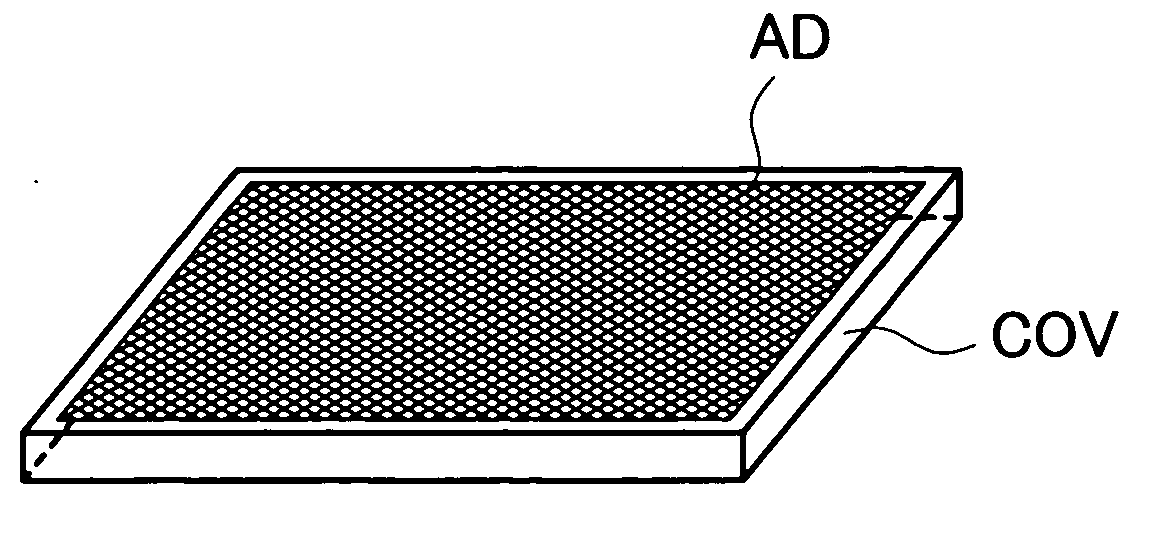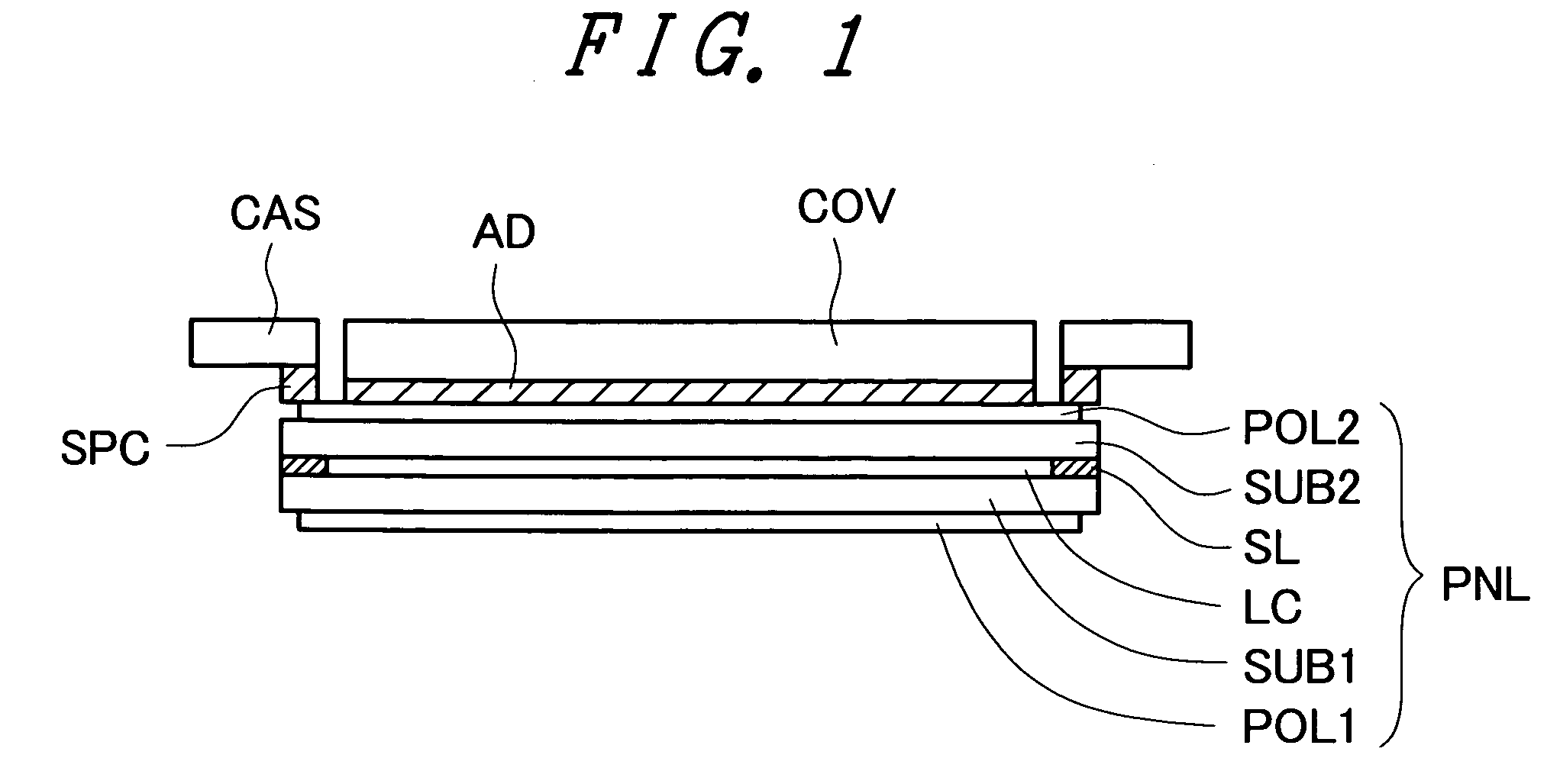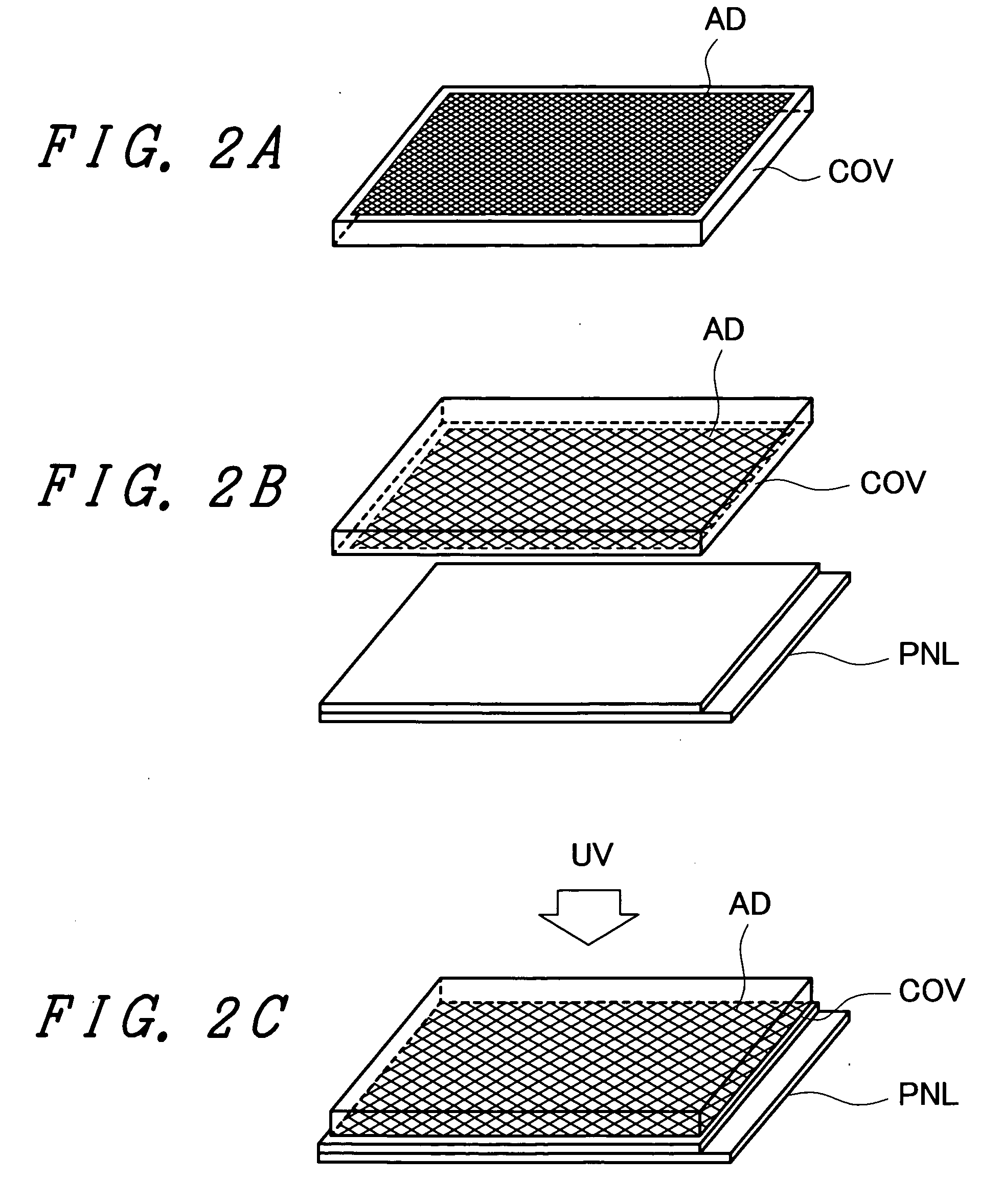Manufaturing method of display device
a display device and manufacturing method technology, applied in the manufacture of electrode systems, electric discharge tubes/lamps, instruments, etc., can solve the problems of reducing the visibility and affecting the appearance of the display devi
- Summary
- Abstract
- Description
- Claims
- Application Information
AI Technical Summary
Benefits of technology
Problems solved by technology
Method used
Image
Examples
embodiment 1
[0059]FIG. 1 is a sectional view illustrating one example of a display device of an embodiment 1 of the invention. In the embodiment 1, a description will be given exemplifying a case of using a liquid crystal display device as a display panel PNL. FIG. 1 also shows a condition in which a display panel PNL such as, for example, a liquid crystal display device is fitted on a casing CAS of a portable telephone or the like.
[0060]The display panel PNL has a substrate SUB1, which is a transmissive insulating substrate made of, for example, glass, a substrate SUB2, which is a transmissive insulating substrate made of, for example, glass, a seal material SL, which bonds the substrate SUB1 and the substrate SUB2 together, a liquid crystal LC sealed in within a portion surrounded by the substrate SUB1, the substrate SUB2, and the seal material SL, a polarizing plate POL1 disposed on a side of the substrate SUB1 opposite the liquid crystal LC, and a polarizing plate POL2 disposed on a side of...
embodiment 2
[0085]FIG. 6 is a side view illustrating one example of a method of manufacturing a display device of an embodiment 2 of the invention. When bonding the display panel PNL and the transparent substrate COV together, by their being bonded together while the display panel PNL is being bent in such a way as to be convex on a surface to be bonded, as shown in FIG. 6, it is possible to reduce a possibility of drawing in large air bubbles. In this case, it is desirable that a sum of a thickness t1 of the substrate SUB1 and a thickness t2 of the substrate SUB2 is 0.8 mm or less, more preferably, 0.6 mm or less. Although there is no particular restriction on a lower limit, it is desirable that the sum is 0.1 mm or more.
[0086]Although FIG. 6 shows an example in which the display panel PNL is being bent, this not being limiting, it is also acceptable that the display panel PNL and the transparent substrate COV are bonded together while only the transparent substrate COV, or both the display pa...
embodiment 3
[0087]FIG. 7 is a sectional view illustrating one example of a display device of an embodiment 3 of the invention. A difference from FIG. 1 of the embodiment 1 is that the adhesive AD is extended to an extremity of the polarizing plate POL2. For example, by adjusting the viscosity, application pattern or application quantity of the adhesive AD, it is possible, at the time of the bonding, to spread the adhesive outside the extremity of the transparent substrate COV. Alternatively, by applying the adhesive AD to the display panel PNL side, too, it is possible to realize the invention.
PUM
 Login to View More
Login to View More Abstract
Description
Claims
Application Information
 Login to View More
Login to View More - R&D
- Intellectual Property
- Life Sciences
- Materials
- Tech Scout
- Unparalleled Data Quality
- Higher Quality Content
- 60% Fewer Hallucinations
Browse by: Latest US Patents, China's latest patents, Technical Efficacy Thesaurus, Application Domain, Technology Topic, Popular Technical Reports.
© 2025 PatSnap. All rights reserved.Legal|Privacy policy|Modern Slavery Act Transparency Statement|Sitemap|About US| Contact US: help@patsnap.com



